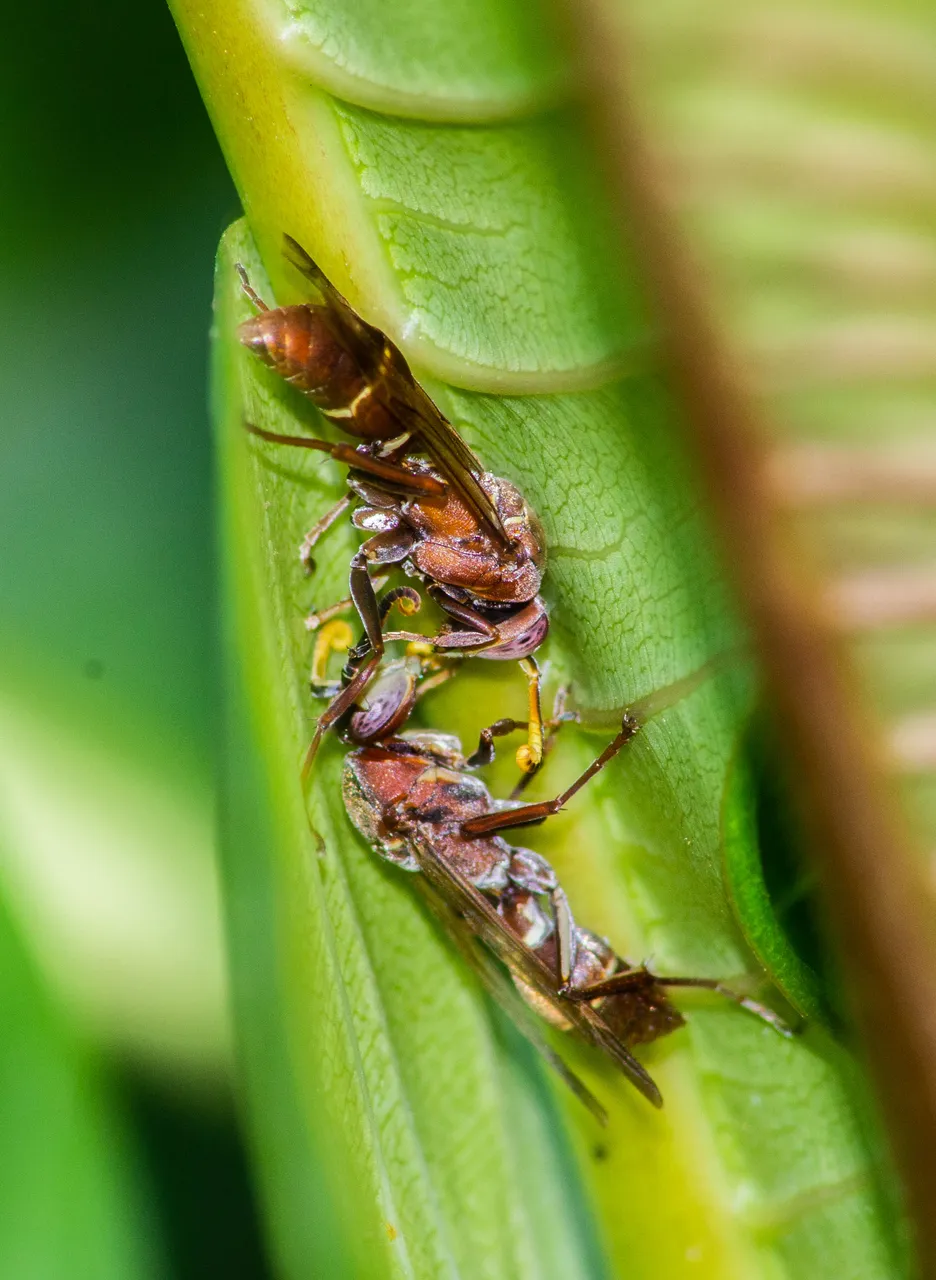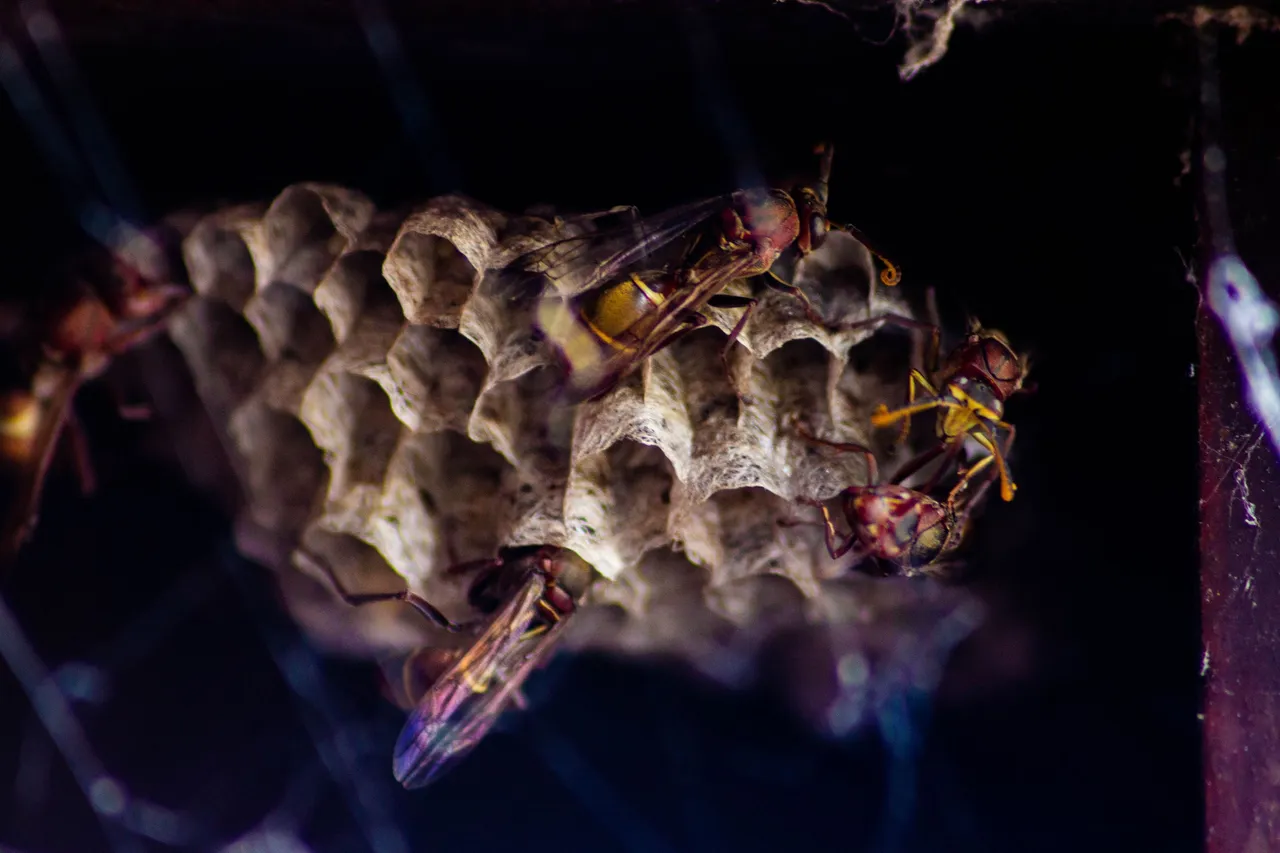
My entry into the Qurator Opposites challenge is on wasps. I have always liked wasps but at a distance. This photo however I needed to get up rather close and personal but I was nicely rewarded with this lovely picture of an intimate moment between these two sitting opposite each other.
Paper wasps are actually quite fascinating little insects. There are many different families of them and they come in different colour forms from black to brown to red with or without bands on their abdomen but they all belong to the Polistes genus.
They are great for any garden as they catch caterpillars that would normally be pest and they feed them to their growing larvae in their paper nests. The adults feed on nectar and do contribute towards pollination.
Their nests I find fascinating and are the reason for their common name Paper Wasps. The adults chew up the cellulose rich fibres of wood and other plant material and mix it with their saliva to creat the honeycomb paper nest structure. It usually hangs from a single thread and is sometimes called an umbrella nest.

They are a social species and have one queen who starts the colony by creating a small nest which she then lays her first clutch of eggs into. Once the eggs hatch, she feeds the larvae and nurtures the entire brood on her own, feeding each larvae by mouth and chewing up caterpillars for them as well. Once they reach the right age, she then places paper caps on the cells they are in and these will become the first clutch of workers that will assist her in growing the colony.
They then work round the clock to help her expand the nest adding new cells to it and she will continue to lay eggs until she is ready to lay those that will become the first males and females. These then leave the nest to fly off and mate. The fertile females are the only ones to hibernate and survive through winter while the others die off. They even have their own ways of dealing with ant predation, water logged nests from rain and how to keep their nests cool in the height of summer. Clever little creatures!
It's interesting to see how caring these little insects are looking after their young and tending to the brood and the nest. I've never had a good understanding of these insects until now but have a lot more respect and appreciation for them after learning more about them.
They don't sting unless provoked and are not nearly as vicious or dangerous as yellow jackets or hornets. Only the females sting while the males bite. Sure, they hurt but it doesn't last long and only would badly affect someone with an allergy to stings. I personally have never been stung by one but now that I know more about them, I doubt that I would get into a situation where I would be in a position to get stung at least it certainly would be out of my actions to provoke a wasp, I wouldn't do that.
I hope you learned something interesting about these little wasps and have a better appreciation for them like I do now.
Images are my own, taken by me with a 300mm macro lens. The first image is my entry into the Quarator Opposites Photo Quest competition.
Sources:
https://australian.museum/learn/animals/insects/paper-wasps/
National Geographic on Paper Wasps
Paper Wasps General Info
Paper Wasp Nest Life Cycle